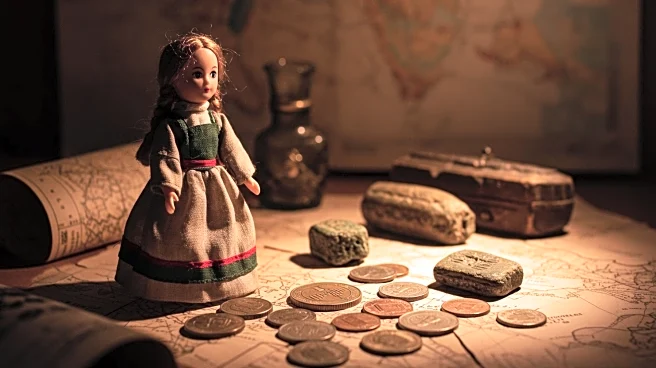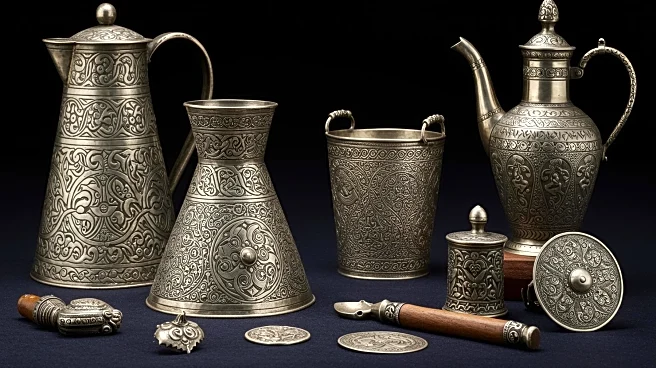What is the story about?
What's Happening?
Mark McMullan, a 51-year-old metal detectorist from Darlington, has uncovered a pewter doll believed to date back to the mid-1500s. The discovery was made in a field near his home, where the doll was buried 14 inches into the ground. Initially, McMullan thought the object was a piece of lead, but upon cleaning it, he noticed facial features. The doll is considered a rare find, as base-metal figurines from the 16th century, though popular as children's toys, are seldom recovered. Underwater archaeologist Gary Bankhead from Durham University noted that while more elaborate toys were imported from Europe, this piece might be locally produced, as similar finds have been recorded in northern England. McMullan plans to deliver the doll to the County Durham finds officer for further examination.
Why It's Important?
The discovery of the post-medieval doll provides a unique insight into the cultural and social aspects of the 16th century, particularly in terms of children's play and toy-making. Such finds are significant for archaeologists and historians as they offer a glimpse into the daily lives and artistic expressions of past societies. The doll's discovery also highlights the role of amateur metal detectorists in contributing to historical research and preservation. This find could potentially lead to more interest and exploration in the area, possibly uncovering more artifacts that could further illuminate the history of the region.
What's Next?
Mark McMullan intends to hand over the doll to the County Durham finds officer, which could lead to further analysis and possibly display in a museum. The discovery may encourage more metal detectorists to explore the area, potentially leading to additional historical finds. The academic community may also take interest in studying the doll to determine its exact origins and historical context, which could contribute to a broader understanding of the period's material culture.
Beyond the Headlines
This discovery underscores the importance of the Portable Antiquities Scheme, which allows for the documentation and study of such finds. It also raises questions about the preservation and protection of archaeological sites, as well as the ethical considerations of metal detecting. The doll's find could inspire discussions on the balance between amateur exploration and professional archaeological practices.
AI Generated Content
Do you find this article useful?













